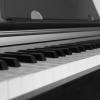-
Posts
1,839 -
Joined
-
Last visited
Reputation Activity
-
 jcs reacted to FilmMan in Watch this and be inspired!
jcs reacted to FilmMan in Watch this and be inspired!
Jc, your parents look so young. just kidding.
I could see why they achieved the million plus views. She's a babe and he's a hunk. Brad and Angelina better watch out as there is a new Mr. and Mrs. Smith around the corner. Cheers.
-
 jcs reacted to Henry Gentles in Watch this and be inspired!
jcs reacted to Henry Gentles in Watch this and be inspired!
They've set the bar sooo high, makes me wanna give up!!
-
 jcs reacted to jnorman34 in Watch this and be inspired!
jcs reacted to jnorman34 in Watch this and be inspired!
well, I know I personally picked up several good new ideas from this. thanks, jcs.
-
 jcs got a reaction from jgharding in Watch this and be inspired!
jcs got a reaction from jgharding in Watch this and be inspired!
A must watch for all students of film.
(Not shot on a GH4 or A7S)
-
 jcs got a reaction from pablogrollan in A more realistic impression of the Sony A7S low light performance at ISO 12,800
jcs got a reaction from pablogrollan in A more realistic impression of the Sony A7S low light performance at ISO 12,800
For stills, the 5D Mark III might be better due to color science (and for sure higher resolution) even though the A7S has more DR. For video, the A7S is looking to be a worthy replacement for the 5D3, including RAW. To clarify, 14-bit RAW from the 5D3 will likely provide a better color image, however when factoring in recording time, disk space, in-camera low-light NR, and processing time, 50Mbit/s XAVC-S will be more detailed and cleaner than 5D3 RAW with a lot less work and disk usage. The A7 & A7R are clearly better for stills vs. the A7S.
It's looking like the A7S sensor isn't the real magic*: it appears to be the trick NR processor for video. If reports regarding lower than normal battery performance are accurate for the A7S, this could be from the hardware NR processing. This could also explain why they couldn't do 4K internally: they're at their thermal and CPU limit just doing 4K = > 1080p + NR + H.264.
* If the sensor was truly lower noise from (gapless) bigger pixels, still images should be cleaner on the A7S vs. the A7 & A7R. However, downsampling higher resolution to lower resolution also reduces noise (requires more computing power- an issue with video).
-

-
 jcs reacted to utsira in Watch this and be inspired!
jcs reacted to utsira in Watch this and be inspired!
"A movie could Improve your life"
I'm going to print that out in foot-high Comic Sans and stick it on my wall.
Seriously, this is great! I couldn't decide whether this is ironic or not, but I think it's completely beyond irony. Their chroma-key layer needs tweaking though, I think.
-

-
 jcs got a reaction from utsira in Watch this and be inspired!
jcs got a reaction from utsira in Watch this and be inspired!
A must watch for all students of film.
(Not shot on a GH4 or A7S)
-
 jcs got a reaction from Bob Wall in NEX to EF SpeedBooster on A7S (using A7S Super-35 mode)
jcs got a reaction from Bob Wall in NEX to EF SpeedBooster on A7S (using A7S Super-35 mode)
Since the A7S provides a Super-35 crop mode, it would appear the NEX to EF SpeedBooster would work with the A7S, providing another stop of light. Image quality for the crop mode should be decent as Sony appears to have a high-quality scaler.
-
 jcs reacted to Quirky in Panasonic GH4 or Sony A7S
jcs reacted to Quirky in Panasonic GH4 or Sony A7S
So... if your goal is mostly video and not stills, why not just ignore the usual suspects, and go straight to the Digital Bolex, then?
Skip the dishwasher, buy a few new dishwasher brushes and a bottle of Fairy, and save the money for the camera.
I think I'd do just that, if my current dishwasher went kaputt today. ;)
The D16 is quite a compelling option, albeit a bit pricey, too, for my current budget.
-
 jcs got a reaction from Chris Gibbs in A more realistic impression of the Sony A7S low light performance at ISO 12,800
jcs got a reaction from Chris Gibbs in A more realistic impression of the Sony A7S low light performance at ISO 12,800
5D3 H.264 needs decent sharpening in post: still not super detailed, but is workable if using sharp lenses.
5D3 RAW sharpened in Resolve or (even better), ACR, is very solid for 1080p. A sharpened 5D3 RAW shot compares very well to even a 4K GH4 shot projected on a 20' 4K screen (saw this in person).
14-bit 5D3 RAW still looks great compared to the GH4 4K and A7S (examples so far):
Still no direct competition at that price point for 5D3 RAW color, color science and decent 1080p resolution. The workflow and disk space requirements are another story (I'm shooting mostly with the GH4 now).
-
 jcs got a reaction from Xiong in A more realistic impression of the Sony A7S low light performance at ISO 12,800
jcs got a reaction from Xiong in A more realistic impression of the Sony A7S low light performance at ISO 12,800
I played with the 12MP JPEG in ACR- highlights are clipped and not recoverable- DR looks similar to 5D3 in that shot. Noise cleaned up OK using ACR tools, however image then looked over-processed (Neat Video would work better along with temporal NR).
I shot a clip with the GH4 at ISO 1600 and lit it with a single LED (iPhone 5S). After Neat Video NR and bringing up the levels in post, it looks pretty good compared to the A7S examples so far. I would expect the A7S to do better in any case, however if Neat Video is needed in both cases and the final results look similar, the A7S's utility over the GH4 in low light would then be lessened. The FS700, especially with SpeedBooster is pretty good in low light, all the way up to ISO6400 (still needs NR in post at that level).
So far most of the A7S demo shots have been with locked off (tripod) or very low camera motion. It would be helpful to see typical handheld (with and without a rig) shots. While it would be nice to have a 5D3 replacement at 50Mbps (vs. 5D3 RAW at ~64GB per 12min), I almost pre-ordered the A7S but am holding off until it's released and actual end-user videos are posted. Also curious about the A7S XLR audio attachment (release date and cost).
-
 jcs got a reaction from Cosimo murgolo in A more realistic impression of the Sony A7S low light performance at ISO 12,800
jcs got a reaction from Cosimo murgolo in A more realistic impression of the Sony A7S low light performance at ISO 12,800
5D3 H.264 needs decent sharpening in post: still not super detailed, but is workable if using sharp lenses.
5D3 RAW sharpened in Resolve or (even better), ACR, is very solid for 1080p. A sharpened 5D3 RAW shot compares very well to even a 4K GH4 shot projected on a 20' 4K screen (saw this in person).
14-bit 5D3 RAW still looks great compared to the GH4 4K and A7S (examples so far):
Still no direct competition at that price point for 5D3 RAW color, color science and decent 1080p resolution. The workflow and disk space requirements are another story (I'm shooting mostly with the GH4 now).
-
 jcs got a reaction from varicam in GH4 DR on external 10 bit 4.2.2?
jcs got a reaction from varicam in GH4 DR on external 10 bit 4.2.2?
Right, for $6K one could get the 4K URSA with Super-35mm sensor, global shutter, pro-audio, and 12-stops DR:
Looks pretty good! (video from 4K Production camera- would expect URSA to be the same or better).
-
 jcs got a reaction from themartist in A more realistic impression of the Sony A7S low light performance at ISO 12,800
jcs got a reaction from themartist in A more realistic impression of the Sony A7S low light performance at ISO 12,800
I played with the 12MP JPEG in ACR- highlights are clipped and not recoverable- DR looks similar to 5D3 in that shot. Noise cleaned up OK using ACR tools, however image then looked over-processed (Neat Video would work better along with temporal NR).
I shot a clip with the GH4 at ISO 1600 and lit it with a single LED (iPhone 5S). After Neat Video NR and bringing up the levels in post, it looks pretty good compared to the A7S examples so far. I would expect the A7S to do better in any case, however if Neat Video is needed in both cases and the final results look similar, the A7S's utility over the GH4 in low light would then be lessened. The FS700, especially with SpeedBooster is pretty good in low light, all the way up to ISO6400 (still needs NR in post at that level).
So far most of the A7S demo shots have been with locked off (tripod) or very low camera motion. It would be helpful to see typical handheld (with and without a rig) shots. While it would be nice to have a 5D3 replacement at 50Mbps (vs. 5D3 RAW at ~64GB per 12min), I almost pre-ordered the A7S but am holding off until it's released and actual end-user videos are posted. Also curious about the A7S XLR audio attachment (release date and cost).
-
 jcs got a reaction from Bob Wall in A more realistic impression of the Sony A7S low light performance at ISO 12,800
jcs got a reaction from Bob Wall in A more realistic impression of the Sony A7S low light performance at ISO 12,800
I played with the 12MP JPEG in ACR- highlights are clipped and not recoverable- DR looks similar to 5D3 in that shot. Noise cleaned up OK using ACR tools, however image then looked over-processed (Neat Video would work better along with temporal NR).
I shot a clip with the GH4 at ISO 1600 and lit it with a single LED (iPhone 5S). After Neat Video NR and bringing up the levels in post, it looks pretty good compared to the A7S examples so far. I would expect the A7S to do better in any case, however if Neat Video is needed in both cases and the final results look similar, the A7S's utility over the GH4 in low light would then be lessened. The FS700, especially with SpeedBooster is pretty good in low light, all the way up to ISO6400 (still needs NR in post at that level).
So far most of the A7S demo shots have been with locked off (tripod) or very low camera motion. It would be helpful to see typical handheld (with and without a rig) shots. While it would be nice to have a 5D3 replacement at 50Mbps (vs. 5D3 RAW at ~64GB per 12min), I almost pre-ordered the A7S but am holding off until it's released and actual end-user videos are posted. Also curious about the A7S XLR audio attachment (release date and cost).
-
 jcs got a reaction from nib187 in GH4 DR on external 10 bit 4.2.2?
jcs got a reaction from nib187 in GH4 DR on external 10 bit 4.2.2?
10-bit 4K external recording will be possible with the Shogun (September) or quad SDI recorders (possible now with YAGH: http://www.bhphotovideo.com/c/product/857190-REG/AJA_KI_PRO_QUAD_Ki_Pro_Quad.html).
-
 jcs reacted to utsira in ImpulZ Film Emulation 3D LUTs with the GH4?
jcs reacted to utsira in ImpulZ Film Emulation 3D LUTs with the GH4?
That was originally what film LUTs were designed for. But who distributes on film nowadays?
I think the ImpulZ LUTs are definitely meant to be part of a colour grading workflow, and not a substitute for grading. Some of them are very subtle. They're a lot of fun. I blog a bit about it here:
http://marginaliafilm.wordpress.com/2014/06/13/using-impulz-luts-to-grade-hdslr-footage/
And here's my test on vimeo, only 720p I'm afraid:
The generic Rec.709 LUTs work really well with the G6 footage. If GH4 users aren't keen on the Cinelike D profile they could shoot with a natural profile and try the Rec.709 LUTs rather than the GH4 specific ones.
Right, time to watch Mexico v Cameroon
-
 jcs got a reaction from Christina Ava in Will Canon EVER respond to competitors?
jcs got a reaction from Christina Ava in Will Canon EVER respond to competitors?
The GH4 is a great camera but does not replace the 5D3. For stills the 5D3 is still King. IQ for RAW video 5D3 is still best in class (A7S might be a contender with 50Mbps compressed). GH4 has 4K, slomo, decent stills, all in a tiny package, especially if using m43 lenses (while excellent and sharp, not as good looking as FF L class lenses).
A 4K 5D Mark 4 with AF video and XAVC-class codec would put Canon back on top. Will be unlikely with the 1DC still on the market.
-
 jcs reacted to cpc in 4K 8bit to 2K 10bit - Let's get to the bottom of this please!
jcs reacted to cpc in 4K 8bit to 2K 10bit - Let's get to the bottom of this please!
Thanks to John for pointing me here, it is an interesting discussion. :)
As one of the people who think that there is free tonal precision lunch to be had in 4K to 2K downscale and the one that wrote the ShutterAngle article linked on the previous page, I think the 8-bit display argument is a bit beside the point. The whole idea of shooting 4K for 2K (for me, at least) is in using a flat profile as s-log2 on the A7S. Then working it in post to the appropriate contrast.
As my idea of a good looking image is generally inspired by film and includes strong fat mids and nice contrast, this means the source image is gonna take quite the beating before getting in the place I want it. And here is where the increased precision is going to help. To simplify it a bit: when you stretch an 8-bit image on an 8-bit display, you are effectively looking at a, say, 6-7-bit image on an 8-bit display, depending on how flat the source image is. That's why starting with more precision is helpful. Starting with 20-25 values in the mids (which is the case with 8-bit s-log2) is just not gonna handle it, when you are aiming at, say, 60-65 values there in delivery.
Compression and dirty quantization to begin with surely affect the result and limit precison gains. But they don't entirely cancel them, and the better codec you use on the hdmi feed, the cleaner the downscale.
-
 jcs got a reaction from Andrew Reid in How to cure banding in DSLR footage (and GH4 4K holds the key...)
jcs got a reaction from Andrew Reid in How to cure banding in DSLR footage (and GH4 4K holds the key...)
To summarize from the other thread:
8-bit monitors can't display 10-bit information without some form of effective dither Banding and blocking are especially noticeable due to the way the eye-brain system detects edges: Mach banding and other illusions: http://www.wikiradiography.com/page/Mach+bands+and+other+Optical+Illusions Noise or image texture from 4K material can be helpful in reducing banding/blocking for material after downsampling to 2K The resulting 2K material won't be the same as 10-bit capture from the sensor, however it can in some cases provide additional tonality for grading latitude In order for this to work, there must be sufficient noise or texture in the 4K material. Increasing ISO might help when shooting sky or other challenging material Adding noise in post can help reduce banding, ideally on the 4K material before downsampling. In the case where downsampling introduces aliasing, applying Gaussian blur before adding noise to the 4K material can help When the final 2K render has banding or blocking when rendered to 8-bit 420 for delivery, a small amount of noise can be added to provide effective dither to preserve tonality for 8-bit quantization It's not clear if NLEs already apply dithering for 32-bit float to 8-bit integer conversion. If not, a plugin could provide more optimal error diffusion dither to the 32-bit material which will survive 8-bit quantization. While Floyd-Steinberg is easy to code, it's not very fast. Newer CPU/GPU versions are much faster: http://web.iiit.ac.in/~ishan.misraug08/research/dithering/dithering.html Challenging areas such as sky can be selectively masked and dithered using tools such as Resolve (External Fill + Power Window) -
 jcs got a reaction from amanieux in Panasonic GH4 Review
jcs got a reaction from amanieux in Panasonic GH4 Review
Andrew, the math has been explained that even though only the luma could possibly be 10-bits from an 8-bit 4K to 1080 downsample, in practice all that's going to happen is a low-pass filter and any additional luma variance will come from noise; not the same thing as capturing and directly storing 10-bits from the sensor.
From the examples shown, one advantage of the A7S over the GH4 is more dynamic range from the sensor. Folks have already tested the GH4 10-bit external output against the 8-bit Canon Cx00 and the GH4 is significantly outclassed for post latitude. 10-bits can help with tonality gradations, however if true sensor dynamic range wasn't captured, an 8-bit system with more real sensor DR will outclass it.
If this explanation doesn't make sense, you can do the tests yourself with actual footage. Thomas Worth wasn't enable to show there's real 10-bit gradations with his own custom software.
If you want to be fair and accurate, you might want to revise the GH4 10-bit luma statement until you prove it to yourself one way or another with actual footage.
-
 jcs reacted to sunyata in GH4 4K Green Screen cut with FS700
jcs reacted to sunyata in GH4 4K Green Screen cut with FS700
I'd like to see her blending with dinosaurs!
-
 jcs got a reaction from maxotics in Panasonic GH4 H.264 Codec Vs. Canon DSLR H.264 Codec - (Yes Canon is embarrassing)
jcs got a reaction from maxotics in Panasonic GH4 H.264 Codec Vs. Canon DSLR H.264 Codec - (Yes Canon is embarrassing)
The Canon C100 (and Sony FS700) 24Mbit/s H.264 codecs are on par with the GH4. It's not clear if the 50Mbit/s GH4 1080p can provide better quality vs. the 24Mbit/s codecs, however the image quality won't be as good as the other two cameras can produce higher quality at 1080p than the GH4 (GH4 needs to shoot 4K and downscale in post to match and possibly exceed those cameras (but won't be by much: the C100 is near the Nyquist limit for 1080p, the FS700 just a bit less). In my tests to far, it looks like the 24Mbit/s FS700 codec is doing a better job with color (and certainly dynamic range (14 stops for FS700 vs. 10-11.x for GH4)) than the 100Mbit/s GH4 4K (which provides more luma-edge resolution).
The Canon DSLRs are limited by low resolution images coming into the compressor (5D3), and aliasing (most of the other Canon DSLRs). Coupled with low CPU/ASIC power to perform high quality compression with H.264 and not-as-sophisticated-noise-reduction (as with the GH4), the final result from Canon DSLRs is comparatively low compared to cameras with better pre-compression frames and more powerful+modern compression and NR.
14-bit 11.x DR 5D3 RAW slays all these camera for final image quality, especially skin tones, at the cost of huge disk space and lots of extra work. If Canon were to release a new camera with modern CPU+ASICs and C100 level H.264 or better, they'd easily be competitive again. Apparently Sony is going to give it a go with the A7S (only issue noted so far is RS, which probably won't be any worse than the 5D3).












